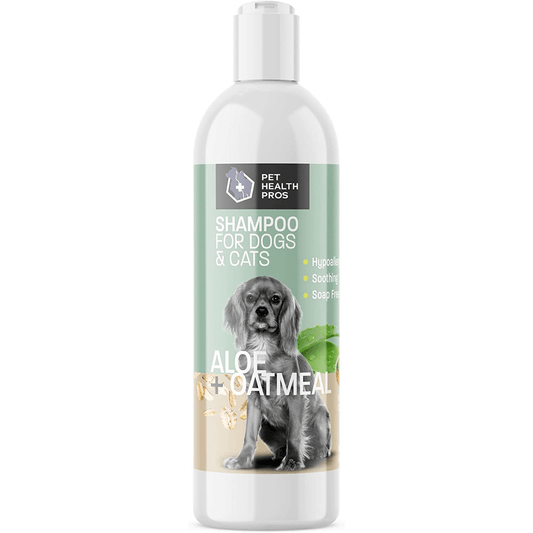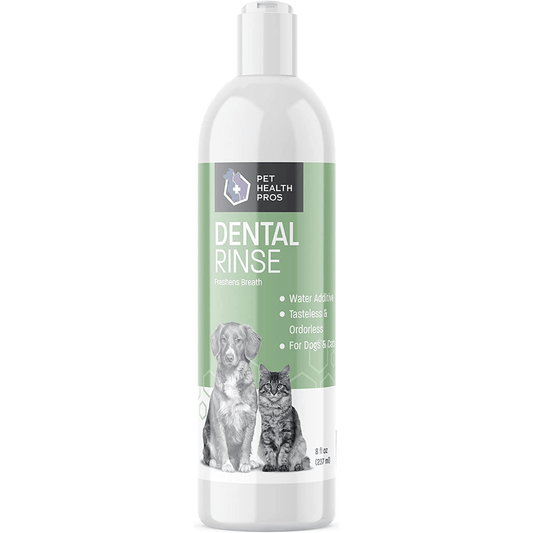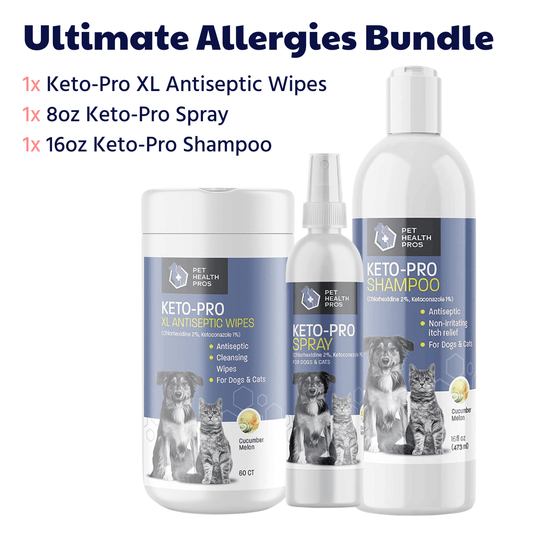Choosing the right dog food base mix can be a bit overwhelming with so many options available. But understanding what a base mix is and how it can benefit your furry friend is key to making an informed decision. This guide will walk you through the essentials of dog food base mixes, helping you find the best fit for your pet's needs.
Key Takeaways
- A dog food base mix is a foundational blend of ingredients that can be customized with proteins and other nutrients.
- Using a base mix can simplify meal prep and ensure your dog gets balanced nutrition.
- Different types of base mixes, like dehydrated or freeze-dried, cater to various dietary preferences.
- Always check ingredient quality, focusing on whole foods and avoiding fillers or harmful additives.
- Transitioning to a new base mix should be gradual to avoid digestive issues.
Understanding Dog Food Base Mixes
What Is A Dog Food Base Mix?
Okay, so what exactly is a dog food base mix? Think of it as the foundation of your dog's meal. It's a blend of ingredients designed to be nutritionally balanced when you add your own fresh protein. It's not a complete meal on its own, but it provides all the necessary vitamins, minerals, and carbohydrates. It takes the guesswork out of making sure your dog gets everything they need. It's like a pre-made smoothie base – you just toss in your favorite fruits and you're good to go. You can find a variety of base mixes at your local pet store.
Benefits Of Using A Base Mix
Why bother with a base mix when you can just buy regular dog food? Well, there are actually a bunch of good reasons:
- Customization: You get to control the protein source. If your dog has allergies or sensitivities, this is huge.
- Quality Control: You know exactly what's going into your dog's bowl. No mystery ingredients!
- Cost-Effective: It can be cheaper than buying high-quality commercial dog food, especially if you source your protein wisely.
- Healthier Diet: Many owners report improvements in their dog's coat, energy levels, and digestion.
Using a base mix allows for a more tailored approach to your dog's diet, addressing specific health needs and preferences that commercial foods might not accommodate. It's about being more involved and informed about what your dog is eating.
Common Ingredients Found In Base Mixes
So, what's actually in these base mixes? Here's a rundown of some common ingredients:
- Grains: Brown rice, quinoa, oats – these provide carbohydrates for energy.
- Vegetables: Carrots, sweet potatoes, peas – packed with vitamins and fiber.
- Fruits: Apples, blueberries – antioxidants and extra vitamins.
- Supplements: Vitamins E and D, calcium, and other minerals to ensure a balanced diet.
It's always a good idea to read the label carefully to understand the specific ingredients and their proportions. Some mixes might also include things like flaxseed or dried kelp for added nutrients.
Evaluating Nutritional Needs
Choosing the right dog food base mix involves more than just picking something off the shelf. It's about understanding what your dog actually needs to thrive. Different dogs have different requirements, and getting this right can make a huge difference in their health and happiness. It's not always straightforward, but with a little effort, you can figure out the best approach for your furry friend.
Assessing Your Dog's Age and Size
Age and size play a big role in determining your dog's nutritional needs. Puppies, for example, need food that's rich in protein and calories to support their rapid growth. Older dogs, on the other hand, might need fewer calories and more fiber to help with digestion and weight management. A tiny Chihuahua will have very different needs than a giant Great Dane. Here's a quick guide:
- Puppies (under 1 year): High protein, high fat, more frequent meals.
- Adults (1-7 years): Balanced protein, moderate fat, portion control.
- Seniors (7+ years): Lower calorie, higher fiber, joint support.
Understanding Dietary Restrictions
Does your dog have any allergies or sensitivities? This is a big one. Some dogs can't tolerate certain grains, proteins, or additives. Food allergies can show up as skin issues, digestive problems, or even ear infections. If you suspect your dog has a food allergy, it's important to work with your vet to identify the culprit. Common allergens include:
- Beef
- Chicken
- Dairy
- Wheat
If your dog has a sensitive stomach, you might want to look for base mixes that are grain-free or contain novel proteins like fish or lamb. Always read the ingredient list carefully and avoid anything that you know your dog can't tolerate.
Consulting With Your Veterinarian
When in doubt, talk to your vet. They can provide personalized recommendations based on your dog's specific needs and health history. Your vet can also help you interpret food labels and understand what all those ingredients actually mean. Plus, they can rule out any underlying health issues that might be affecting your dog's appetite or digestion. It's always better to be safe than sorry when it comes to your dog's health. Don't hesitate to ask for their advice!
Types Of Dog Food Base Mixes
Alright, let's get into the different types of dog food base mixes you'll find out there. It's not just one-size-fits-all, and knowing the differences can really help you pick the best one for your furry pal. I'll break down the main categories, so you know what you're looking at when you're browsing the pet store or scrolling online.
Dehydrated Base Mixes
Dehydrated base mixes are pretty popular, and for good reason. They're lightweight, easy to store, and have a decent shelf life. Basically, the ingredients have had their moisture removed, which helps preserve them without needing a bunch of additives. You just add water (or broth, if you're feeling fancy) to rehydrate them before serving. They often include a mix of veggies, fruits, and grains, and sometimes even protein sources. The cool thing is that they take up less space in your pantry compared to other options.
Freeze-Dried Base Mixes
Freeze-dried mixes are similar to dehydrated ones, but the process is a bit different. Freeze-drying involves freezing the ingredients and then removing the ice through a vacuum process. This method tends to preserve more of the nutrients and flavor compared to dehydration. They're usually a bit pricier, but some people swear by them because of the higher nutrient retention. Just like dehydrated mixes, you rehydrate them before feeding your dog.
Raw Food Base Mixes
Raw food base mixes are designed to be combined with raw meat sources. These mixes typically consist of ground bone, fruits, vegetables, and supplements to create a balanced raw meal.
Raw food diets can be a bit controversial, so it's super important to do your research and talk to your vet before making the switch. Make sure you're handling the raw meat safely to avoid any bacterial contamination. If you're comfortable with the prep and storage requirements, a raw food base mix can be a good way to ensure your dog gets a nutrient-rich diet.
Choosing The Right Ingredients
Identifying Quality Proteins
Okay, so you're trying to figure out the best stuff to put in your dog's food. Makes sense! Protein is super important. It's what helps them build and repair tissues, and keeps their energy levels up. When you're looking at base mixes, check out the protein sources. You want to see things like real meat (chicken, beef, fish), eggs, or maybe some plant-based proteins if that works for your dog.
Here's a quick rundown:
- Real meat: Always a good choice, easy to digest for most dogs.
- Eggs: A complete protein source, meaning it has all the amino acids dogs need.
- Plant-based proteins: Can be okay, but make sure it's a high-quality source and your dog can digest it well.
Avoid anything with vague terms like "meat by-products" or "animal digest." You want to know exactly what your dog is eating, and those terms don't really tell you anything.
Incorporating Vegetables and Grains
Alright, let's talk veggies and grains. These aren't just fillers; they can actually be pretty good for your dog. Veggies give them vitamins and minerals, and grains (if your dog can tolerate them) can provide fiber and energy.
Think about adding these:
- Leafy greens: Spinach, kale, and lettuce are packed with vitamins.
- Root vegetables: Carrots and sweet potatoes are good sources of fiber and beta-carotene.
- Whole grains: Brown rice, quinoa, and oats can be good energy sources if your dog isn't sensitive to grains.
Avoiding Harmful Additives
This is a big one. You really want to watch out for the junk that some companies put in dog food. We're talking artificial colors, flavors, and preservatives.
Here's what to avoid:
- Artificial colors: Things like Red 40, Blue 2, and Yellow 5 & 6. They don't add any nutritional value and can cause problems for some dogs.
- Artificial flavors: These are often used to make low-quality ingredients taste better. If the food needs artificial flavors, it's probably not great quality.
- Chemical preservatives: BHA, BHT, and ethoxyquin. There are natural preservatives that are much better for your dog, like vitamin E (tocopherols) and vitamin C (ascorbic acid).
It's worth spending a little extra time reading the ingredient list to make sure you're not feeding your dog anything harmful. Your dog will thank you for it!
Preparing Dog Food With Base Mixes
Mixing Instructions
Okay, so you've got your base mix, and you're ready to go. The first thing you should always do is read the instructions on the package. Seriously, every brand is a little different, and they know their product best. Generally, you'll be adding water (or sometimes broth) to the mix, letting it sit for a few minutes to rehydrate, and then adding your protein and any other goodies.
Here's a basic rundown:
- Measure the base mix according to your dog's needs (more on that later).
- Add the recommended amount of water or broth.
- Let it sit for the specified time (usually 5-10 minutes).
- Mix in your protein and any other supplements.
Storage Tips
Once you've mixed up a batch, you need to think about storage. Proper storage is key to keeping the food fresh and safe for your dog. If you're making a big batch, you'll want to store it in the fridge.
Here are some tips:
- Store the mixed food in an airtight container in the refrigerator.
- Use the food within 2-3 days to prevent spoilage.
- If you have a lot of leftovers, consider freezing individual portions.
- Frozen portions can last for a month or two.
I usually prep a few days' worth of food at a time. It saves time during the week, and I know my dog is getting fresh, healthy meals. Freezing is a lifesaver for when I get busy.
Portion Control Guidelines
Figuring out how much to feed your dog can be tricky, but it's super important. Overfeeding can lead to weight gain and health problems, while underfeeding can leave your dog feeling hungry and lacking nutrients.
Here's a simple guide:
- Start with the feeding guidelines on the base mix package.
- Adjust the portion size based on your dog's age, weight, and activity level.
- Monitor your dog's weight and adjust accordingly.
- If you're unsure, talk to your vet for personalized recommendations.
Here's a sample feeding chart (always adjust based on your dog's specific needs):
| Dog Weight (lbs) | Daily Amount (cups) |
|---|---|
| 10 | 1/2 |
| 20 | 1 |
| 40 | 1 3/4 |
| 60 | 2 1/2 |
Transitioning To A New Dog Food Base Mix
Switching your dog's food can be a bit like moving houses for them – exciting, but also a little stressful. It's important to make the change gradually to avoid upsetting their stomach. Here's how to do it right.
Signs Of A Successful Transition
How do you know if the switch is going well? Keep an eye out for these positive signs:
- Consistent appetite: Your dog should still be excited about meal times.
- Normal stool: Look for well-formed and consistent bowel movements.
- Healthy energy levels: Your dog should remain active and playful.
- No digestive upset: No vomiting, diarrhea, or excessive gas.
Common Issues During Transition
Sometimes, things don't go as smoothly as planned. Here are some common problems and how to handle them:
- Soft stool or diarrhea: This could mean you're switching too fast. Slow down the transition.
- Gas: Some gas is normal, but excessive gas could indicate an intolerance. Consider a different base mix.
- Reduced appetite: If your dog isn't eating, try mixing in a small amount of their old food to entice them.
- Vomiting: This is a sign of a more serious issue. Consult your vet.
Adjusting Feeding Schedules
As you transition to a new base mix, you might need to tweak your dog's feeding schedule. Here's what to consider:
- Monitor weight: Keep an eye on your dog's weight to ensure they're getting enough calories.
- Adjust portion sizes: Base mixes can vary in calorie density, so adjust portions accordingly.
- Consider activity level: Active dogs may need more food than less active ones.
- Split meals: Dividing their daily food into two or three smaller meals can aid digestion.
Remember, every dog is different. What works for one might not work for another. Be patient, observe your dog closely, and adjust as needed. If you're ever unsure, your vet is your best resource.
Popular Brands Of Dog Food Base Mixes
Top-Rated Brands
Okay, so you're looking for some solid dog food base mix brands? There are a few that consistently get good reviews. These brands often focus on high-quality ingredients and transparent sourcing.
- The Honest Kitchen: Known for its dehydrated mixes using human-grade ingredients.
- Sojos: Offers a variety of pre-mixes that require adding meat and oil.
- Dr. Harvey's: Specializes in blends with a focus on whole foods and herbs.
These brands usually have different formulas for various life stages and specific dietary needs, so you can find something that fits your dog. It's worth checking out their websites to see the full ingredient lists and nutritional info.
Comparing Prices and Quality
Alright, let's talk money and what you get for it. Price doesn't always equal quality, but it's definitely something to think about. Generally, you'll find that brands using higher-quality ingredients, like real meat and organic produce, will cost more. But, you might be able to save some money by buying in bulk or looking for sales. Here's a general idea of what to expect:
| Brand | Price Range (per lb) | Quality Indicators |
|---|---|---|
| The Honest Kitchen | $10 - $15 | Human-grade, dehydrated, transparent sourcing |
| Sojos | $8 - $12 | Whole food ingredients, customizable |
| Dr. Harvey's | $9 - $14 | Focus on herbs and whole foods, holistic approach |
Remember to factor in the cost of the meat and other ingredients you'll need to add to the base mix. Sometimes, a slightly more expensive base mix can be more cost-effective in the long run if it requires less supplementation.
Reading Customer Reviews
Customer reviews can be a goldmine of information. I always check them before trying a new food. You can learn a lot about how well dogs tolerate the food, if they like the taste, and if owners have seen any positive changes in their dog's health. Look for reviews that mention things like:
- Improved digestion
- Shinier coat
- Increased energy levels
- Any issues like allergies or sensitivities
Also, pay attention to how the company responds to negative reviews. A company that addresses concerns and tries to make things right is usually a good sign. Don't just rely on the star rating; read the actual comments to get a feel for other people's experiences.
Staying Informed About Dog Nutrition
Following Industry Trends
Keeping up with the latest in dog nutrition can feel like a full-time job, but it's worth it for your furry friend. New research comes out all the time, and formulations are constantly being updated. One thing I do is set up Google alerts for keywords like "dog nutrition research" and "new dog food guidelines." This way, I get a daily digest of articles and studies. It's also helpful to follow some of the big names in the veterinary nutrition world on social media. They often share quick summaries of new findings. Staying informed helps you make the best choices for your dog's health.
Understanding Labeling Regulations
Dog food labels can be confusing, to say the least. It's not always clear what you're actually feeding your dog. The Association of American Feed Control Officials (AAFCO) sets standards for pet food labeling, but even with those, it can be tricky. Here are a few things I always look for:
- The "complete and balanced" statement: This means the food is supposed to meet all the nutritional needs for a particular life stage.
- The ingredient list: Ingredients are listed in order of weight, so the first few are the most important.
- The guaranteed analysis: This gives you the percentages of protein, fat, fiber, and moisture.
It's important to remember that labels can be misleading. For example, "chicken flavor" doesn't mean the food contains a lot of chicken. It just means it tastes like chicken to your dog. Always read the fine print and do your research.
Joining Pet Nutrition Communities
Connecting with other pet owners and experts can be a great way to learn more about dog nutrition. There are tons of online forums and groups where people share their experiences and ask questions. I'm part of a few Facebook groups where people discuss everything from raw feeding to dealing with picky eaters. It's also helpful to attend workshops or webinars on pet nutrition.
Here's a quick comparison of different community types:
| Community Type | Pros | Cons |
|---|---|---|
| Online Forums | Large user base, diverse opinions | Can be overwhelming, misinformation can spread easily |
| Facebook Groups | Easy to access, good for quick questions | Moderation varies, echo chambers can form |
| Local Pet Clubs | In-person interaction, build relationships | Limited reach, may not have expert advice |
| Veterinary Conferences | Access to experts, evidence-based information | Can be expensive, geared towards professionals rather than pet owners |
Just remember to take everything you read with a grain of salt and always consult with your vet before making major changes to your dog's diet.
Keeping up with the latest information on dog nutrition is really important for your furry friend’s health. You can find helpful tips and advice on what to feed your dog to keep them happy and healthy. Don’t forget to check out our website for more resources and guides on dog nutrition!
Final Thoughts on Choosing the Right Dog Food Base Mix
In the end, picking the right dog food base mix for your furry friend is all about understanding their needs and preferences. Take the time to read labels, check ingredients, and consider any specific dietary requirements your dog might have. Don’t hesitate to consult your vet if you’re unsure. Remember, what works for one dog might not work for another, so be ready to experiment a bit. With a little patience and research, you’ll find the perfect mix that keeps your pup happy and healthy.
Frequently Asked Questions
What is a dog food base mix?
A dog food base mix is a type of dog food that provides a foundation for making homemade meals. It usually contains essential ingredients that can be mixed with fresh foods like meat and vegetables.
Why should I use a base mix for my dog?
Using a base mix can help ensure your dog gets a balanced diet. It saves time and makes it easier to prepare healthy meals at home.
What are some common ingredients in dog food base mixes?
Common ingredients include grains, vegetables, vitamins, and minerals. These ingredients work together to provide the nutrients your dog needs.
How do I know what my dog needs in their diet?
You should consider your dog's age, size, and any health issues. It's also a good idea to talk to your veterinarian for personalized advice.
What types of dog food base mixes are available?
There are several types of base mixes, including dehydrated, freeze-dried, and raw food mixes. Each type has its own benefits and preparation methods.
How can I transition my dog to a new base mix?
To transition, start by mixing a small amount of the new base mix with your dog's current food. Gradually increase the new mix over several days while watching for any digestive issues.








